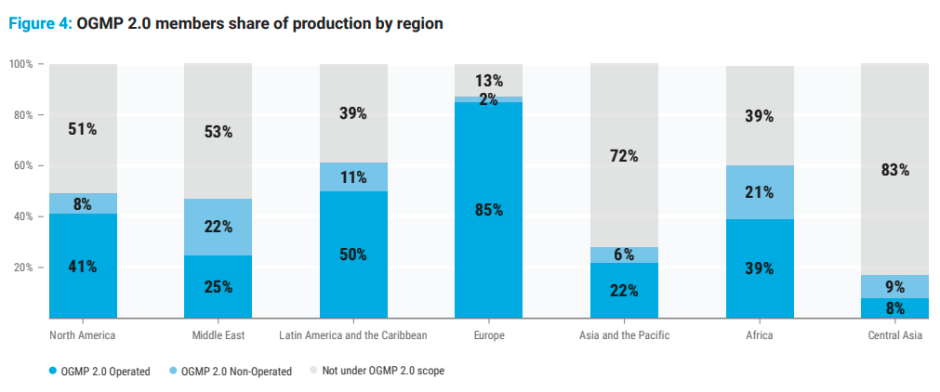The UN Environment Programme’s (UNEP) latest report — An Eye on Methane: From Measurement to Momentum — reveals both encouraging progress and major challenges in global efforts to reduce methane emissions.
Methane, the second-largest driver of global warming after CO₂, is responsible for about one-third of the planet’s temperature rise. Here are 10 key facts highlighting where the world stands in tackling this powerful greenhouse gas.
Government and industry responses to methane alerts have increased twelve-fold.
Responses to UNEP’s 3,500+ satellite-detected methane alerts rose from just 1 percent to 12 percent in a year — a positive trend but far from sufficient to meet climate goals.
The Global Methane Pledge targets a 30 percent reduction by 2030.
UNEP emphasizes that action must accelerate dramatically to achieve the Global Methane Pledge, a global commitment to cut methane emissions 30 percent by 2030.
Emission inventories have historically underestimated methane leaks.
Traditional data collection has missed large portions of methane output, making satellite-based real-world data essential for accurate tracking and accountability.
Oil and Gas Methane Partnership 2.0 (OGMP 2.0) covers 42 percent of global production.
Over the past five years, OGMP 2.0 membership doubled to 153 companies, representing nearly half of global oil and gas production — a major step toward transparency.
One-third of oil and gas emissions tracked with real-world measurements.
Member companies are now reporting or set to report emissions at OGMP’s Gold Standard, enabling data-based mitigation across a large share of the sector.
Only 17 percent of global oil and gas output meets the highest reporting standard.
Sixty-five companies achieved Gold Standard reporting, while another 50 (15 percent) are on the path toward that level, showing growing momentum for accurate emissions reporting.
Nearly 90 percent of methane alerts remain unanswered.
Despite improvement, the majority of the 3,500+ methane alerts still go unaddressed — a serious gap in response that limits progress toward methane reduction.
UNEP’s Methane Alert and Response System (MARS) expanding to new sectors.
The MARS program is widening its scope to include methane from coal mines and waste sites, areas with significant yet often unmeasured emissions.
Steel industry methane emissions under new scrutiny.
UNEP’s Steel Methane Programme targets metallurgical coal, which adds 25 percent to steel’s carbon footprint. New transparency tools, including a Steel Methane Transparency Database, will help identify and reduce these emissions.
Global collaboration accelerating methane science.
UNEP’s International Methane Emissions Observatory (IMEO) has supported 46 peer-reviewed studies across six continents, improving measurement technology and creating methane baselines for agriculture and energy sectors.
Expert Insights:
UNEP Executive Director Inger Andersen said, “Reducing methane emissions can quickly bend the curve on global warming, buying more time for long-term decarbonization.”
European Commissioner Dan Jørgensen added that credible data is essential for transparency and accountability in energy markets. Japan’s Vice-Minister Takehiko Matsuo emphasized satellite collaboration to transform space-based data into actionable climate mitigation.
Here’s a summary of methane mitigation progress by each company and industry group mentioned in the UNEP OGMP 2.0 report:
Abu Dhabi National Oil Company (ADNOC)
In 2023, ADNOC conducted a detailed source-level measurement campaign focused on crude oil tanker loading — a major source of methane emissions. The company identified an opportunity to enhance its crude oil preheating system, enabling methane recovery before loading. This initiative supports ADNOC’s Level 4 reporting and marks a significant step toward emission reduction from oil transfer operations.
Italgas
Italy’s Italgas carried out a comprehensive 2024 measurement campaign using advanced, vehicle-based leak detection technology across its entire gas distribution network. With higher frequency and broader coverage, the company has reduced methane leaks by over 40 percent since joining OGMP 2.0 in 2020, showcasing the benefits of data-driven, continuous monitoring.
Jonah Energy
Jonah Energy performed a Level 4 campaign to measure emissions from enclosed combustors used to burn waste gas. Findings revealed higher-than-estimated emissions, prompting process optimization to reduce air flow and improve combustion efficiency. These improvements resulted in notable emission reductions and better operational performance.
XP (Ukraine)
Despite the ongoing conflict in Ukraine, XP achieved substantial emission reductions in 2024. The company automated its separator and expansion chamber discharging process — previously a major venting source — cutting emissions by 50 percent year-on-year. XP’s success demonstrates how automation and innovation can drive methane reduction even under challenging conditions.
Midstream Operators
Midstream companies participating in OGMP 2.0 have reduced emissions through gas recovery systems and portable compressors that reinject gas during maintenance and operations. When recompression is not possible, operators use flaring instead of venting, minimizing methane release into the atmosphere.
Pneumatic Device Replacement Across Industry
Methane emissions from natural gas-actuated pneumatic devices have dropped significantly between 2022 and 2024. Operators are replacing these high-emission systems with non-emitting equipment powered by instrument air or nitrogen. This transition, supported by Level 4 reporting and regulatory requirements, has become one of the most effective methane mitigation strategies in the oil and gas sector.
Bottom Line:
While methane monitoring and transparency are improving, the pace of actual mitigation must quicken. With credible data and global collaboration, UNEP believes the world can make meaningful progress toward a cooler planet by 2030.
Baburajan Kizhakedath

